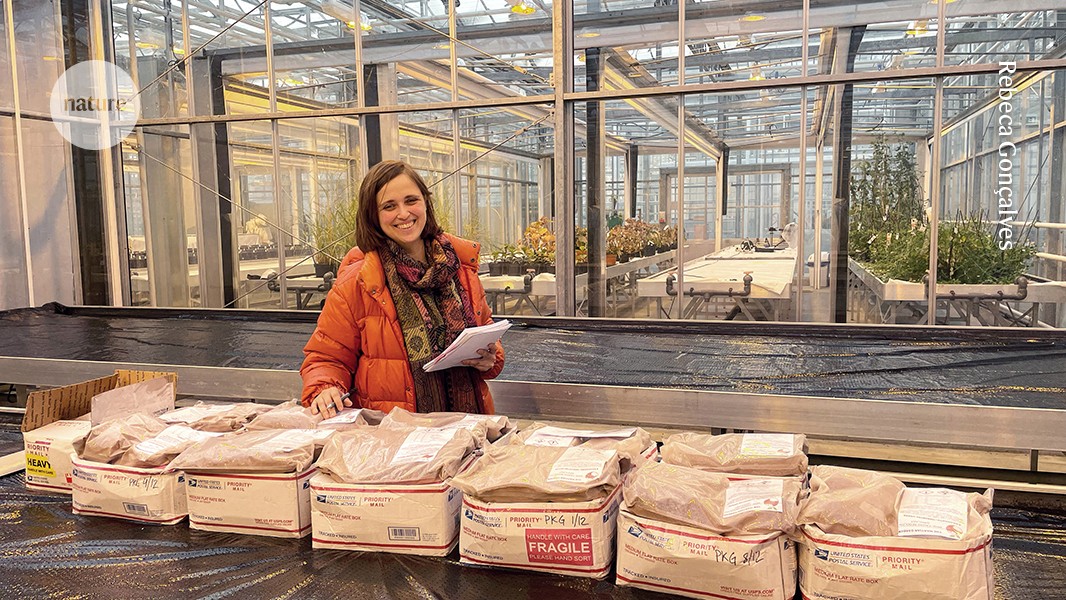“The day this photo was taken, in November 2021, I got the best of presents. One hundred kilograms of material designed to simulate Mars regolith, the dense, soil-like deposits present on the planet’s surface, arrived from Austin, Texas, at the Wageningen University laboratory in the Netherlands, where I was then working. Mars has no nutrients or organic matter, so there’s no real soil in its regolith. The simulant I received had been developed by NASA researchers on the basis of data retrieved and analysed by rovers that have visited the red planet.
Over the next few months, my colleagues and I started to explore what we could grow in the material. We found that tomatoes, peas and carrots all took to the soil and grew well. But could these plants realistically survive on Mars?
The planet does have water, but most of it is frozen at its poles or buried deep underground. So for plants to live, water would need to be pumped up to the surface. Mars has almost no atmosphere and no magnetic field, so plants would have to be housed in colonies, with greenhouse-like structures to protect them. In these, an internal ecosystem with a controlled atmosphere could help the plants to retrieve oxygen through hydrolysis.
In modern agriculture, those techniques are already used to protect crops. And research to understand how to help food grow in harsh conditions won’t be wasted if it doesn’t get to Mars. That’s because restoring infertile, degraded soil that’s been damaged by climate change, or events such as flash flooding and droughts, will become more and more important in the future.
I’d love to visit Mars, but preferably when some kind of life-support system is in place. Our research might represent a step in that direction.”
This interview has been edited for length and clarity.


